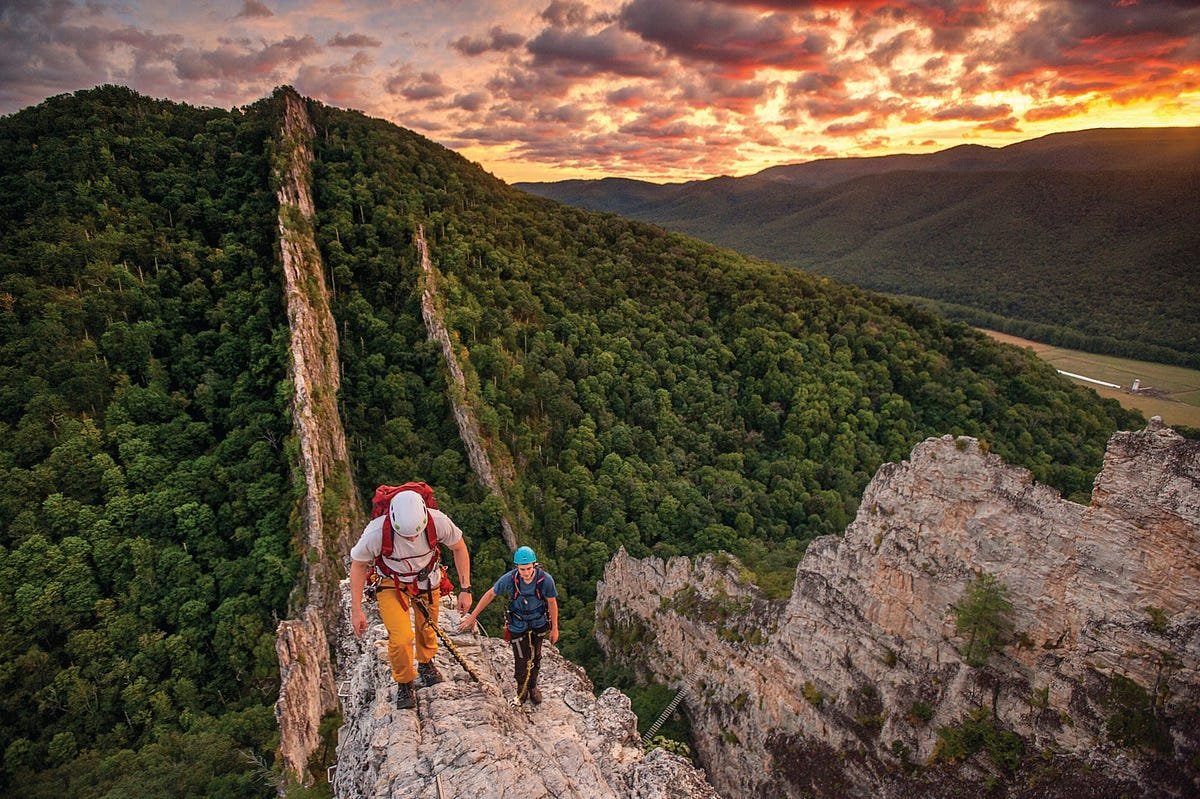The Moment I Almost Lost My Best Friend to a Cliff: A Wake-Up Call Every Hiker Needs | by Couple’s Escape to Zion | Jul, 2025

The kind of dramatic cliff views that draw us in — and can put us at risk
It was supposed to be a perfect day. Golden hour light painting the Pacific coastline, my best friend Jake practically bouncing with excitement as we approached what looked like the ultimate Instagram spot. Three years later, I still wake up sometimes thinking about how differently that afternoon could have ended — and how a single moment of carelessness nearly cost me the most important friendship of my life.
We’d been hiking the California coastal trail for about two hours when we spotted it — a dramatic cliff overlook that seemed tailor-made for the kind of photos that make people stop scrolling. Jake, who’d recently started a travel blog, was immediately drawn to the edge like a magnet.
“Sarah, you have to see this view!” he called out, already twenty feet ahead of me and moving toward what I now know was an unstable cliff edge. The warning signs were there — literally. A weathered wooden post with faded text about cliff dangers stood exactly where we’d left the main trail. But like so many hikers before us, we barely glanced at it.
Warning signs like this one are often overlooked in the excitement of reaching a scenic viewpoint
What happened next unfolded in slow motion. Jake was positioning himself for the perfect shot, probably six feet from what appeared to be a solid cliff edge. I was fumbling with my camera settings when I heard it — a sound I’ll never forget. Not quite a crack, more like a deep, ominous settling noise, like an old house adjusting to wind.
“Jake, get back!” I shouted, but he was in photographer mode, completely focused on capturing the sunset through his lens. That’s when I saw it — a thin line appearing in the ground beneath his feet. The cliff edge wasn’t where we thought it was. The “solid” ground he was standing on was actually an overhang, and it was starting to give way.
I don’t remember making the decision to move. One moment I was ten feet away, the next I was grabbing Jake’s backpack and pulling him backward with everything I had. We both tumbled to the ground just as roughly three feet of what had looked like solid earth crumbled away and disappeared into the ocean below.
We sat there in stunned silence for what felt like hours, staring at the fresh edge where Jake had been standing moments before. The reality of what almost happened hit us in waves. If I’d been even thirty seconds slower in reacting, or if Jake had moved just a bit further out for a “better angle,” we would have been dealing with a very different outcome.
The allure of the perfect photo can make us forget about the very real dangers of cliff environments
That night, back at our campsite, Jake and I made a pact. We would never again approach cliff areas without proper knowledge and preparation. What started as casual research into cliff safety turned into an obsession with understanding exactly what we’d done wrong and how to prevent similar close calls in the future.
Our near-miss taught me that cliff safety isn’t just about staying back from the edge — it’s about understanding that the “edge” isn’t always where you think it is. Coastal cliffs, in particular, are constantly changing due to erosion. What looks solid can be nothing more than a thin layer of soil and vegetation covering empty space.
I learned that weather conditions from days or even weeks earlier can affect cliff stability in ways that aren’t immediately visible. That recent rain we’d experienced? It had saturated the cliff face, making it much more prone to collapse. The warning signs we’d ignored weren’t just liability protection — they were placed there because that specific location had a history of cliff failures.
Most importantly, I realized that social media pressure — the desire to capture that perfect, shareable moment — was making us take risks we would never normally consider. The psychology of photography in scenic locations creates a dangerous tunnel vision where the shot becomes more important than personal safety.
Since that day, Jake and I have completely transformed how we approach cliff environments. We invested in proper safety equipment, learned to read geological warning signs, and most importantly, developed a systematic approach to assessing cliff dangers before we ever get close to an edge.
We discovered that effective cliff safety involves understanding weather impacts, recognizing unstable terrain features, maintaining appropriate distances, and having emergency protocols in place. It’s not just about personal responsibility — it’s about having the knowledge and tools to make informed decisions in environments where mistakes can be fatal.
Key Takeaway
The difference between a great hiking story and a tragedy often comes down to knowledge you hope you’ll never need to use. But when that moment arrives, that knowledge becomes invaluable.
Jake still runs his travel blog, and we still seek out incredible cliff-side views. The difference is that now we approach these environments with respect, preparation, and systematic safety protocols. We’ve discovered that understanding cliff dangers actually enhances the experience rather than diminishing it — there’s something deeply satisfying about exploring beautiful but dangerous places with confidence and competence.
The most valuable lesson from our near-miss wasn’t just about staying safe — it was about the importance of sharing knowledge that could prevent other hikers from experiencing what we went through. Every close call is an opportunity to learn something that might save someone else’s life.
If you’re planning any cliff-side adventures, I can’t emphasize enough how important it is to understand the specific risks and safety protocols for these environments. After our experience, I spent months researching and learning from experts about comprehensive cliff safety techniques and emergency protocols that go far beyond basic common sense. That knowledge has not only kept us safe during dozens of subsequent cliff-side hikes, but it’s given us the confidence to explore some truly spectacular places we might have otherwise avoided.

